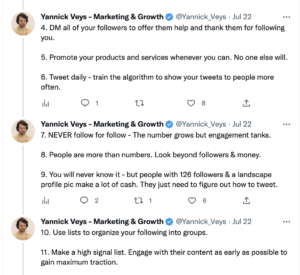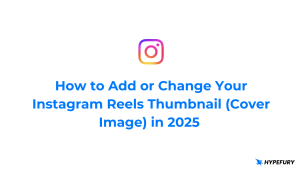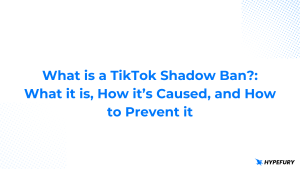B2B Twitter marketers, are you ready to up your game in 2023?
It’s time to break out of the mold and add some personality to your tweets. Say goodbye to dry updates about reports and financials. By infusing humor and creativity, you can engage your target audience and stand out in the crowded Twitterverse. Get ready to make an impact and take your B2B Twitter marketing to the next level!
- How is B2B different from D2C?
- B2B Twitter users have a different decision-making process than individuals
- Your tweets can take on a life of their own within private conversations
- Hard data and storytelling are even more important for a B2B audience
- Translate your reports into Twitter threads
- The role of Twitter advertising in B2B marketing, including targeting options and ad formats

How is B2B different from D2C?
B2B (Business-to-Business) and D2C (Direct-to-Consumer) are two types of marketing strategies that companies use to reach their target audience.
B2B, as the name indicates, refers to a business that sells products or services to other businesses, rather than directly to consumers. This type of marketing is usually a little more complex and involves longer sales cycles, since the buying process often involves multiple stakeholders and decision-makers. It thus makes logical sense that B2B marketers need to focus on the benefits their offer can bring to the target business, (for instance, increased efficiency and savings on costs), rather than to consumers.
A D2C company, on the other hand, sells directly to consumers, without intermediaries such as retailers or distributors. This kind of marketing is therefore more straightforward and its focus is on creating a personal connection with the consumer and building a strong brand image. D2C marketers have to understand their audience – their needs, tastes and demographic – and work on making their experience with the offer as positive as possible.
To sum it up:
- B2B is all about the “business” in “business-to-business”, while D2C is all about the “consumer” in “direct-to-consumer”. So, in B2B marketing, you need to focus on being professional, while in D2C, you can get a little more creative!
- B2B marketers often have to sell to committees, whereas D2C marketers only need to sell to one person – the customer! B2B selling is like herding cats, D2C selling is like petting a kitten.
- In B2B marketing, the buying process can take months, even years, while in D2C, it can take mere minutes. B2B is like a marathon, D2C is like a sprint.
- B2B buyers care about the bottom line, D2C buyers care about the brand. In B2B, it’s all about the “money, money, money”, in D2C, it’s all about the “brand, brand, brand”.
- B2B sales usually involve more people, while D2C sales are usually one-on-one. In B2B, it’s like a group date, in D2C, it’s a one-on-one rendezvous.
These points are generalizations, of course, and they may not apply to every situation, but they should give you a good basic understanding of the differences between B2B and D2C marketing.
B2B Twitter users have a different decision-making process than individuals
A business isn’t a person – indeed, a business has different needs and goals when purchasing something. While an individual may be simply asking themselves, “do I want this product for myself?” a B2B user is also considering how that will actually help their business, and whether it will result in greater results down the line.
If you’re marketing on Twitter to B2B customers, you therefore need to understand the specific pain points your target audience is facing, and present your product or service as the solution! Show them how your offering can help their business operate more efficiently, save time and money, and give them a competitive edge. Prove to them that you have thought about what challenges they’re going through!
And remember, B2B decision making is often a team effort, so you need to address the concerns of multiple stakeholders and build relationships with potentially several key decision makers. It’s not just about getting a single retweet or like, but rather about building a strong, ongoing relationship with your target audience!
Your tweets can take on a life of their own within private conversations
Here’s a not-so-dirty little secret — your B2B audience members are copying your tweets about their industry and sharing them with each other on Slack, Microsoft Teams and private messages for internal discussions. They’re kind of gossiping, but in a good way!
Indeed, your B2B Twitter audience is paying close attention to your tweets and using them as a source of information and inspiration for their own work. They may not be giving you a like or a retweet, but they’re taking notice of your insights and perspectives on their industry and sharing them with their colleagues. They’re discreetly benefiting from you and your knowledge.
That means you have some influence to leverage! This is a valuable opportunity for you to establish yourself as a thought leader and influencer in your field. By creating engaging and informative content on Twitter, you can soon become a reference that people turn to for insights, advice and an interesting perspective on the latest trends in your industry. And once you have people’s attention, they’ll be much more interested in whatever product or service you’re trying to sell!
So don’t hesitate: start sharing your thoughts on the latest news in your field, tweeting out your opinions and reflections, and engaging in exchanges with people online! The more you demonstrate how good of a resource you are, the more likely your B2B audience is to take notice and share your content with their colleagues, increasing your brand’s status as they do so.
Hard data and storytelling are even more important for a B2B audience
Since a business looking to buy a product needs to consider a few very concrete factors before making its decision, it’s crucial that you provide it with tangible evidence of your product’s value with real-life stories of other businesses loving what you have to offer!
Make hard data part of your Twitter content strategy: share statistics or other kinds of measured results to demonstrate the viability of your offer, and illustrate them with visual aids to better catch people’s attention.
As for storytelling, share customer case studies and testimonials, as well as the juiciest success stories to showcase how your offer has helped other businesses achieve their goals. Providing your audience with concrete evidence of your product’s effectiveness will help build trust and credibility with them!
Translate your reports into Twitter threads
The very raison d’être of Twitter is that it’s a fast-paced, almost instantaneous social media platform where everything happens in semi-real time, all of the time. It’s therefore not the best place for long reads of reports and studies!
But that doesn’t mean you can’t share you glowing reports on Twitter to attract customers.
What not translate your long reports into the Twitter thread format? This is a great way to the make such complex but valuable information more accessible and digestible for your B2B Twitter audience!
Here’s how you can do it:
- Choose relevant industry reports: Start by identifying reports and studies that are relevant to your target audience and your industry. These could be reports from research organizations, trade associations, or other sources.
- Summarize the key findings: Once you’ve chosen the reports, summarize the key findings into a series of tweets. Keep each tweet concise and focused on a single point, and use visual aids such as images and graphs to help illustrate the information and make it more fun to read!
- Use Hypefury to build out summaries in the Twitter thread format: Organize the tweets into a Twitter thread thanks to Hypefury’s intuitive platform! Make sure that each tweet builds on the previous one and provides context for the next.
- Engage with your audience: Encourage your Twitter followers to engage with the thread by asking questions (you can even use polls), providing feedback, and sharing their own thoughts and insights. This will help generate conversation and build a community around your content and you!
The role of Twitter advertising in B2B marketing, including targeting options and ad formats
You can go one step further in your B2B Twitter marketing.
If writing threads and engaging aren’t getting you quite the results you want, or if you simply want to accelerate it all, you can add Twitter advertising to your arsenal!
Twitter advertising can help you reach an even more targeted audience with a stronger punch. Here’s what you need to know:
- Targeting options: Twitter offers a range of targeting options that allow you to reach your ideal B2B audience. You can target users based on factors such as location, interests, behaviors and keywords. You can also use Twitter’s custom audience targeting to reach users who have engaged with your business in the past!
- Ad formats: From promoted tweets, promoted accounts, promoted trends, and promoted moments, you have plenty of choices when it comes to ad formats on Twitter. They can all help you promote your brand, drive engagement and eventually generate leads. Promoted tweets, for instance, allow you to create and promote a tweet that appears at the top of users’ timelines, while promoted accounts allow you to promote your business’s Twitter profile to users who may be interested in following you.
- Measuring success: The only way to really know if your efforts are worth it is to check your analytics. Twitter provides detailed reporting and insights to help you measure the success of your advertising campaigns based on impressions, engagement and conversion rates. You can then use this information to optimize your campaigns and improve your results.









